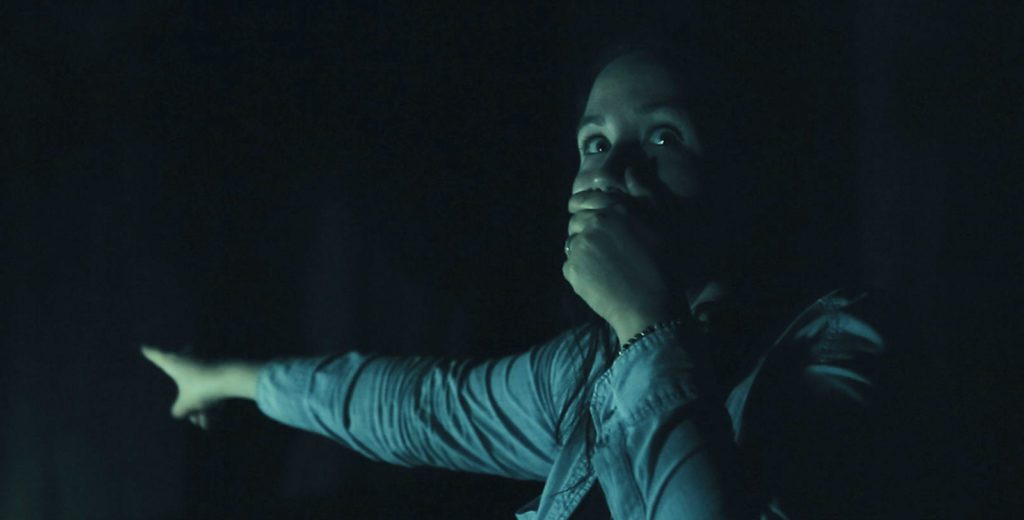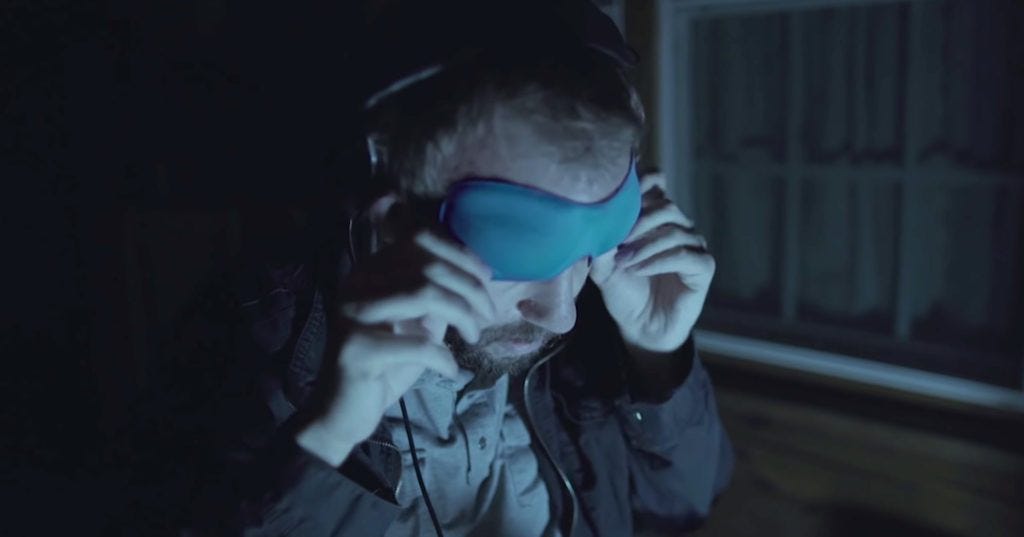Tin Can Thinking in Hellier
A trip down the Kentucky Goblins rabbit hole after watching Hellier Season One
About 50% of Americans believe in the paranormal and these beliefs tend to stem from either traditional religious beliefs, or from a belief in more supernatural and occult ideas. It can be tempting to try and draw correlations between the people who believe in the paranormal and certain characteristics or traits that they might have. There is bountiful research that shows how people who believe in the paranormal tend to have lower reasoning skills, a lack of science education1, and even lower-than-average cognitive ability.2 Yet, a blanket application of these traits to paranormal believers as a collective isn’t always insightful, and research findings of this nature are best employed when used to inform on a case-by-case basis.
Red, White and Blue-Collar
According to US census data estimates3, Kentucky ranks 47th of the 56 U.S states/territories when it comes to median household income. The population of Hellier, Kentucky is predominantly white, and politically it’s predominantly red. In the 2016 U.S elections, just over 80% of Pike County residents voted for Donald Trump. These nuggets of information coupled with footage from the Hellier documentary showing dilapidated and derelict houses in the rural town tells us a lot more than you might think.
Paranormal researchers should always consider the socioeconomic and sociocultural issues that their eyewitnesses experience. The available evidence suggests that Hellier residents might be part of that surge of working class voters who supported the far-right US President at the ballot. Trump’s presidency campaign appealed most to those experiencing relative and absolute deprivation, and those with authoritarian personality traits.4 It’s important to consider this in the context of paranormal belief because those with authoritarian personalities are prone to rigid and superstitious thinking.5
However, the underlying factors which led some Hellier residents to believe that their homes were being visited by Goblin-like creatures will never be known for sure. This is because when it comes to the Hellier documentary about this phenomenon, these questions were not properly explored by the investigators involved.
The Kentucky Goblins
In 2012, Dana and Greg Newkirk were contacted by a man called David who claimed that small, humanoid beings were exiting a mine shaft on the family property and harassing them at night by looking through windows and scurrying around the exterior of the house. He provided them with blurred photos of the creatures and alleged three-toed footprints left behind by the creatures before his emails just stopped.6 Hellier is the documentary that follows a cast of four paranormal investigators as they investigate the case years later. Greg and Dana Newkirk are joined by Kark Pfeiffer, and Connor Randall.
It’s important to point out that although the original eyewitness doesn’t describe the alleged creatures as Goblins, a link is made by Newkirk between this case and that of the Hopkinsville Goblin case- also of Kentucky -which dates back to the 1950s.7
The initial eye-witness reports of the modern Kentucky Goblins from David don’t really provide anything of substance other than personal accounts (which are quite creepy at face value) a few blurry photos, and the footprints. It becomes apparent quite quickly that the cast don’t see this as restrictive and seem to believe that these Goblin creatures might be CryptoTerrestrial phenomena - which is to say that they’re extra-terrestrial creatures living on this Earth who’ve managed to evade the human race by (in this case) living in the vast network of mines and caves that stretch beneath Kentucky and beyond. This means that to the Hellier investigators it is posible that the Goblins seen in Hellier could be linked to all sorts of strange phenomena witnessed across different US states.
High Strangeness
It only gets weirder from there on. Or, should I say Stranger? Not only does the original eye-witness go missing (or at least stop emailing), but other emails of a mysterious nature relating to the case are received, which lead the cast to consider the Goblins to be a small cog in a bigger scheme which is shrouded in Synchromysticism. This is the approach to phenomena which takes Jung’s concept of synchronicity (meaningful coincidences), and goes a step further by suggesting these occurrences are borne of some sort of cosmic divinity. As a result, the Hellier investigators begin to see connected meaning in a number of different ways and believe there is a larger force at work.
However, by believing that they aren’t in control of the outcome of their actions, and that something was messing with or leading them through their investigation, they don’t stop to consider if someone could have been messing with them instead.
For example, there’s no certainty that the original eye-witness exists or that the sender of the emails which followed was anything but someone messing with them. This results in a mid-season scene with the cast- already in rural Kentucky at this point -deciding it might be a good idea to trace the IP address of the person who sent the emails. This is the sort of thing that any decent investigator would do before even considering conducting field-based research.
Futher to this, the boundaries of the investigation continue to blur as the episodes progress. Like John Keel, the Hellier cast seem to believe that cryptoterrestiral phenomena might be linked to elemental phenomena. As such, they use a Spirit Box and employ the Estes Method to communicate with whatever it is that they allege to be dealing with. I’ve written before about why The Estes Method just doesn’t stand up to scientific scrutiny, (The Estes Method: A Scientific Examination, March 2019). The only thing it added to the investigation featured in Hellier was further opportunity for the investigators to interpret randomness as meaningful.
Tin Can Thinking
This is where Hellier started to lose me. This predisposition for a paranormal adventure results in a disappointing investigation of the case because the personal beliefs of those involved are treated as more important than objective truths. This resulted in the investigators making leaps of logic based on faith, trust and nothing much more.
I don’t believe that those involved in Hellier are anything but genuine and that what they claim they believe and experience is what they actually believe and what they think they experience. That said, their approach stands to only create further questions and to keep a mystery thriving while not providing any significant insight. The investigators in Hellier led themselves on a wild goose chase all the while thinking there was some higher purpose and deeper meaning to be found, but ultimately they were the architects of their own mystery.
Synchromysticism serves some paranormal investigators well because it sounds academic and allows them to continue to further the boundaries of their beliefs beyond scientific scrutiny. If questioned, skepticism of these claims is often shut down with blanket dismissals of “materialists just don’t get it!” In reality, all that this achieves is an avoidance of the burden of proof. Ultimately, if you’re not careful with this sort of approach, you can become so caught up in seeing meaning in coincidences that you get excited about the interconnectedness of rusty tin cans.
Otis, L. P., & Alcock, J. (1982). ‘Factors affecting extraordinary belief’. Journal of Social Psychology, vol. 118, p. 77–85.
Wierzbicki, M. (1985). ‘Reasoning errors and belief in the paranormal’. Journal of Social Psychology, vol. 125, p. 489–494.
US Census Data Estimates (2016), Factfinder.census.gov [Online]
https://factfinder.census.gov/faces/tableservices/jsf/pages/productview.xhtml?src=bkmk (Accessed 20th April 2019)
Azarian, B (2017) ‘An Analysis of Trump Supporters Has Identified 5 Key Traits’ Psychology Today [Online] Available at https://www.psychologytoday.com/gb/blog/mind-in-the-machine/201712/analysis-trump-supporters-has-identified-5-key-traits (Accessed April 20th 2019)
Adorno, T. W., Frenkel-Brunswik, E., Levinson, D. J., & Sanford, R. N. (1950). ‘The authoritarian personality‘. New York: Harper and Row.
Newkirk, G (2015) ‘Return of the Kentucky Goblins’, Week in Weird [Online]
http://weekinweird.com/2015/10/03/return-of-the-kentucky-goblins-new-leads-in-a-case-of-strange-creatures-crashed-ufos-and-the-men-in-black/ (accessed 20th April 2019)
Kentucky New Era, ‘Story of Space-ship, 12 Little Men Probed Today’, August 22, 1955, [scanned document] Available at https://news.google.com/newspapers?id=HeYrAAAAIBAJ&sjid=qmUFAAAAIBAJ&pg=2838,3341366 (Accessed 20th April 2019)





